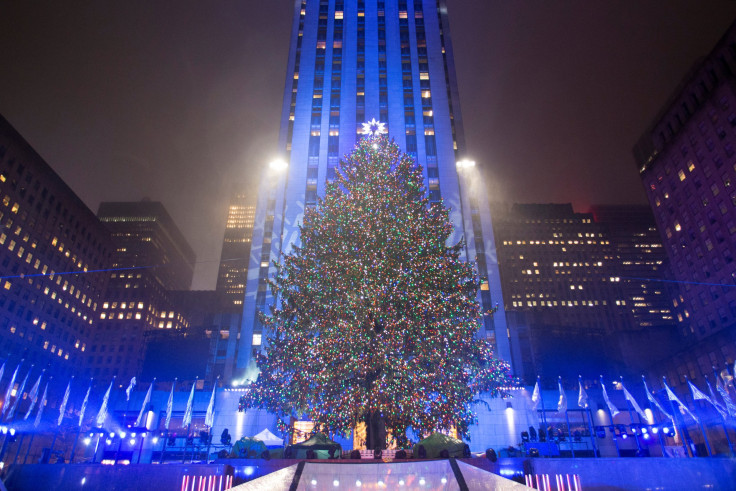Are Christmas Trees Safe? Drought Threatens Holiday Tradition And Global Warming Could Make It Worse

The last thing anyone wants to come home to just before the holidays is a burning Christmas tree. All those carefully wrapped presents, once exciting and colorful beacons of hopeful surprise, turned charred and black. However, a historic drought has left the trees more susceptible to fire and other negative consequences.
Trees purchased to spice up homes with holiday cheer are drier in some parts of the United States, reports out Tuesday and Wednesday found. The drought may also lead to smaller future trees as a result of the water shortages.
“After the first shearing we only got 2-3 inches of growth instead of a foot, so we couldn't capture that foot, so every tree out here is 8-12 inches shorter,” George Brown, an Alabama Christmas tree plantation owner, told local media when asked what the drought there has done to his yields.
The drought in the U.S. has been far reaching. While California’s water scarcity has been widely publicized, a fire earlier this year that burned down a fair portion of a Tennessee tourist attraction brought national attention to the risks in the South.
The dried up conditions have even affected an area of the U.S. that is generally known for being somewhat lush: New England. An “extreme drought” in Massachusetts has led some tree farms to stay shuttered this year because they weren’t getting enough rainfall to support their efforts.
People are being advised to make sure that, if they don’t want their trees to turn brittle and fragile once they bring them home, they water their Christmas trees vigilantly. Since the trees have come out of the ground drier than the norm, they will need more consistent watering and will drink more water. And, if the stump dries up it will seal, killing the tree much quicker as well.
Scientists believe that parts of the world will be at risk of more droughts as the effects of climate change progress. That change is primarily due to the likelihood that, with a rise in average atmospheric temperatures, more precipitation will come down as water instead of snow.
© Copyright IBTimes 2024. All rights reserved.






















